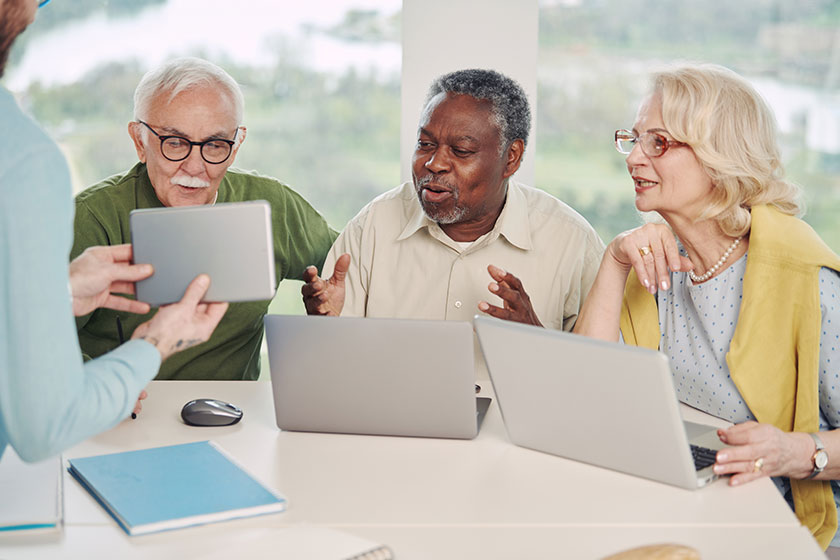In an age where digital technology shapes much of our daily lives, ensuring that residents of retirement communities are not left behind is more important than ever. Elderly personal care goes beyond addressing physical needs; it also encompasses helping residents navigate the digital world. This article explores how personalized care aids in developing digital literacy, enabling a more engaged and secure lifestyle for those in their golden years.
Tailored Digital Learning Programs
Elderly personal care includes the provision of customized digital learning programs that cater to the varying levels of tech-savviness among residents. These programs are designed to introduce residents to digital devices and the internet at a comfortable pace. By assessing individual learning needs, caregivers can create personalized lessons that range from basic device operation to navigating social media platforms, ensuring that every resident receives the right level of support and instruction.
One-on-One Instruction
Personalized attention is key in teaching digital skills. Elderly personal care often involves one-on-one instruction, where residents receive undivided attention from someone who can guide them through the nuances of digital technology. This approach allows for immediate feedback and the opportunity to address specific questions or concerns, making the learning process both efficient and enjoyable.
Creating a Safe Digital Environment
Cybersecurity is a critical concern for everyone, but it is especially crucial for the elderly, who may be more susceptible to online scams and fraud. Elderly personal care includes educating residents on safe online practices, such as recognizing phishing attempts, creating strong passwords, and understanding privacy settings on social media. By fostering a safe digital environment, retirement communities can protect their residents from potential cyber threats.
Encouraging Social Connectivity
Digital literacy opens up new avenues for social connectivity. Elderly personal care supports residents in using technology to stay in touch with family and friends, join online communities, or participate in retirement community events virtually. This not only enhances residents’ social lives but also helps combat feelings of isolation and loneliness, contributing to their overall well-being.
Access to Digital Resources and Support
Within a retirement community, residents have access to a range of digital resources and ongoing support. This might include personal care services that assist residents in setting up and managing digital devices, troubleshooting problems, or exploring new apps and platforms. Additionally, communities may offer workshops or seminars on digital topics of interest, from online banking to digital photography, enriching residents’ technological knowledge and skills.
Integrating Technology with Daily Activities
Elderly personal care also involves integrating technology into residents’ daily activities, making it a natural part of their routine. From using tablets to read the news or eBooks to participating in digital exercise programs, technology has become a tool for enhancing quality of life. Furthermore, communities can use technology to provide memory care services, using apps designed to support cognitive functions through engaging and stimulating activities.
Elderly personal care in retirement communities plays a pivotal role in bridging the digital divide, ensuring that residents not only become competent in using technology but also enjoy the benefits of digital literacy. From personalized learning programs to fostering online safety and social connectivity, elderly personal care empowers residents to lead more connected, secure, and fulfilling lives in the digital age.







